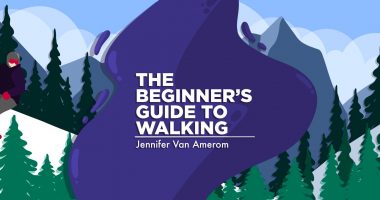A frank talk between a disabled parent and her briefly disabled child
If her wheelchair is a source of shame, what about her mom's NMOSD?

Children don’t see race, age, wealth, weight, or disability, we’re told. Instead, they look for unconditional love. I believe that’s true until a certain point; then their innocence is forever lost.
My 11-year-old daughter, Sophie, has always been a generous person. Even when she began to grow up and realize the limitations society puts on people, she’d charge forward with kindness. Perhaps it’s because her mother is a visible minority, as I have neuromyelitis optica spectrum disorder (NMOSD), or because we’re far from the wealthiest family in her school. Regardless, she’d never been embarrassed about these inequalities until the day she identified as someone others might discriminate against.
Sophie danced most of the summer before we discovered she’d fractured and then refractured her fifth metatarsal (the bone that connects with her pinky toe) along the growth plate. The injury was substantial enough that she was put into a walking boot for at least a month. We canceled the rest of our summer plans except for a Toronto Blue Jays baseball game.
There’s no parking near the stadium, so we had to (slowly) walk several blocks to our gate. When we got there, a friendly attendant asked Sophie about her injury and offered to escort us to our seats. I was grateful because my back was silently screaming about my NMOSD lesions, but Sophie wasn’t thrilled. She reluctantly climbed into a provided wheelchair before we took the elevator up through the belly of the stadium to avoid the zigzag walkway to our section.
Sophie shot me a look of horror when we finally got to our seats. “I’m not riding in that wheelchair when we leave,” she said. “That was so embarrassing! Everyone was staring at me!”
NMOSD, in my daughter’s view
I wanted to give in and tell her she could walk back to the car, but as a patient advocate, I was heartbroken. When I require a mobility aid, do I embarrass my family?
I tried to focus on the baseball game, but Sophie’s reaction left me angry and hurt. I told her the accommodations were to help patrons with all sorts of ailments have the same opportunity to enjoy the game as everyone else, but she continued to protest.
Finally, I pulled rank, something I don’t normally have to do or ever enjoy doing. I told her that being off her foot was in her best interest, and, most importantly, she shouldn’t care what people think. It’s their problem if they can’t accept her as she is.
That evening as I tucked her into bed, I asked if she’d ever been embarrassed by me and my disability. “Of course not,” she said. When I asked why she was embarrassed by the wheelchair, she sat and thought for a few moments. “Is this what it’s like for you, Mama?” she asked. I’ll admit, inside my head I did a small victory dance for getting through to her.
We talked for a while with as much honesty as I could muster. I told her my walking aid does embarrass me. I think it’s ugly, and because I don’t use it every day, I feel like a fraud on the days I do need it. I admitted that I hate asking for help and avoid going out on tough days so I wouldn’t be stared at by people who don’t understand how a young person who looks “normal” struggles to walk.
My greatest worry is knowing that she worries about me. No child should have to deal with that burden.
Living with NMOSD and all its weird symptoms is difficult enough. With the fatigue, sleep deprivation, and regular pain, thinking about how I’m perceived by the world is the last thing I want to do. But while I can’t influence an entire society to regard disabled people as being as capable as anybody else, I can still teach my daughter about that truth.
Note: Neuromyelitis News is strictly a news and information website about the disease. It does not provide medical advice, diagnosis, or treatment. This content is not intended to be a substitute for professional medical advice, diagnosis, or treatment. Always seek the advice of your physician or other qualified health providers with any questions you may have regarding a medical condition. Never disregard professional medical advice or delay in seeking it because of something you have read on this website. The opinions expressed in this column are not those of Neuromyelitis News or its parent company, Bionews, and are intended to spark discussion about issues pertaining to neuromyelitis optica spectrum disorder (NMOSD).







Comments